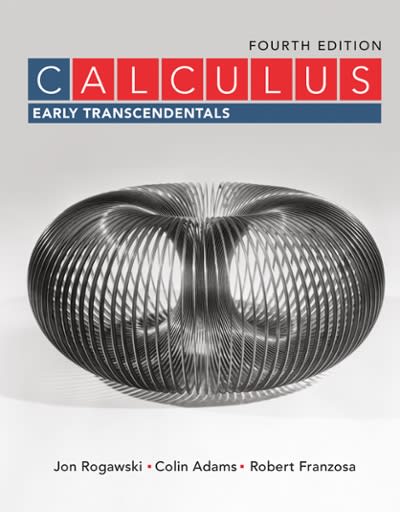Question
Excerpts from the Research Articles Study l: Participants were recruited from a large corporation. Those desiring to begin an exercise program were designated exercise participants
Excerpts from the Research Articles
Study l: Participants were recruited from a large corporation. Those desiring to begin an exercise program were designated exercise participants (the treatment group), and those not desiring to begin exercise at present were designated, control participants. The exercise group consisted of 26 participants and the control group (consisted) of 24.
Exercise participants were given a 10-week cardiovascular exercise program consisting of three 20 to 30-minute sessions per week.
The Profile of Mood States-Short Form Depression Scale requires users to respond to five one-word items (sad, gloomy, lonely, unworthy, discouraged) on a 5 point scale anchored by 0 = Not at All, and 4 = Extremely, to indicate "how you have been feeling during the past week including today" (1Annesi, 2005, p. 895)
Study 2: Twenty-six girls and 23 boys were recruited from a community-based, after-school program (to be in the treatment group). A control group (n = 41) from a similar after-school program that did not incorporate physical activity programming was added. The control group concentrated mostly on homework completion, reading, and tutoring.
The physical activity protocol (for the treatment group) included 3 days per week of cardiovascular activities in the form of non-competitive tasks and games, which alternated among low, medium, and high intensity over 12 weeks.
Depression and overall negative mood were assessed on the Profile of Mood States-Short Form. Included were scales of Depression (5 items) and Total Mood Disturbance (30 items).
1. At the beginning of Study 1, which group (Treatment or Control) had a higher mean depression score?
2. At the end of Study 1, which group (Treatment or Control) had a higher mean depression score?
3. In Study 1, which group had a lower mean depression score at Week 10 than at Week 1?
4. In Study 1, the value of d for the Treatment group is negative. What does the negative indicate?
5. For the Treatment group in Study 1, the mean Week 10 depression score was how many standard deviation units different from the mean Week 1 depression score?
6. In Study 1, would it be appropriate to label either of the two effect sizes as large? If yes, for which group(s) is it large? Explain.
7. In Study 2, would it be appropriate to label any of the four effect sizes as large? If yes, for which group(s) is it large? Explain.
8. In Study 2, would it be appropriate to label any of the four effect sizes as moderate? If yes, for which group(s) is it moderate? Explain.
9. In Study 2, would it be appropriate to label any of the four effect sizes as trivial? If yes, for which group(s) is it trivial? Explain.
Step by Step Solution
There are 3 Steps involved in it
Step: 1

Get Instant Access to Expert-Tailored Solutions
See step-by-step solutions with expert insights and AI powered tools for academic success
Step: 2

Step: 3

Ace Your Homework with AI
Get the answers you need in no time with our AI-driven, step-by-step assistance
Get Started


